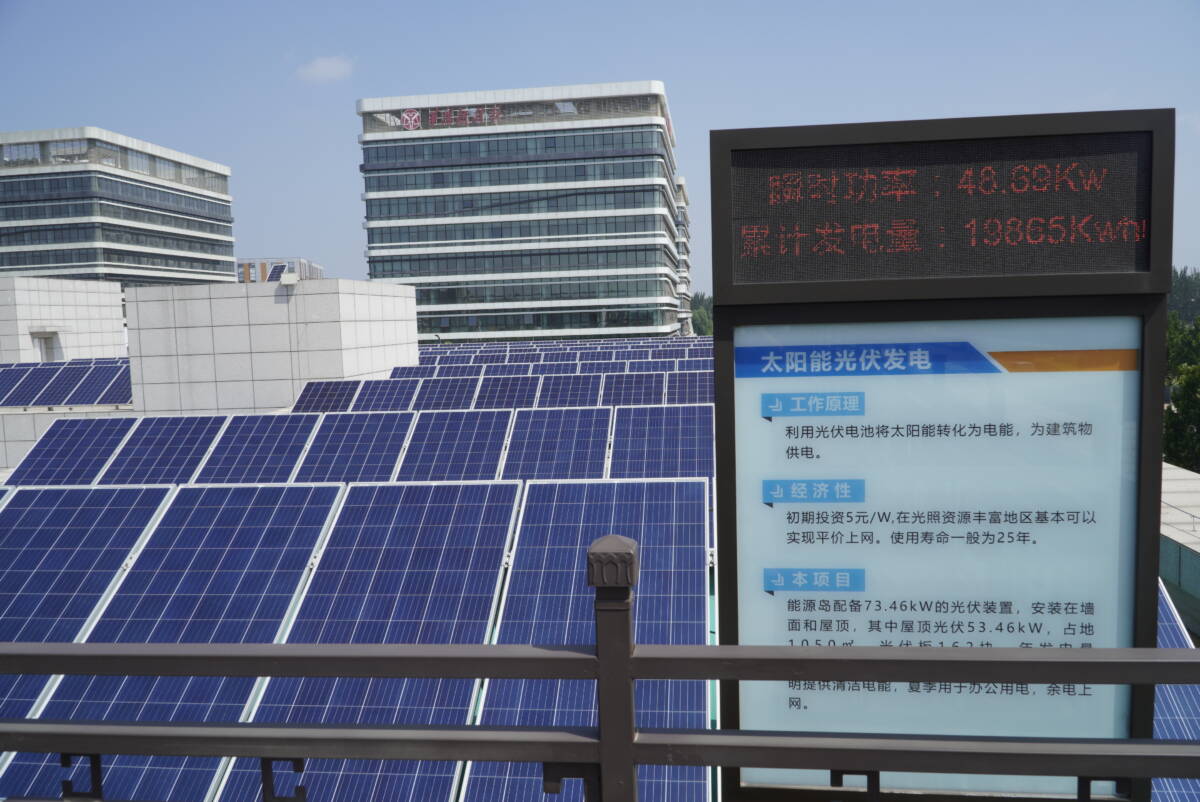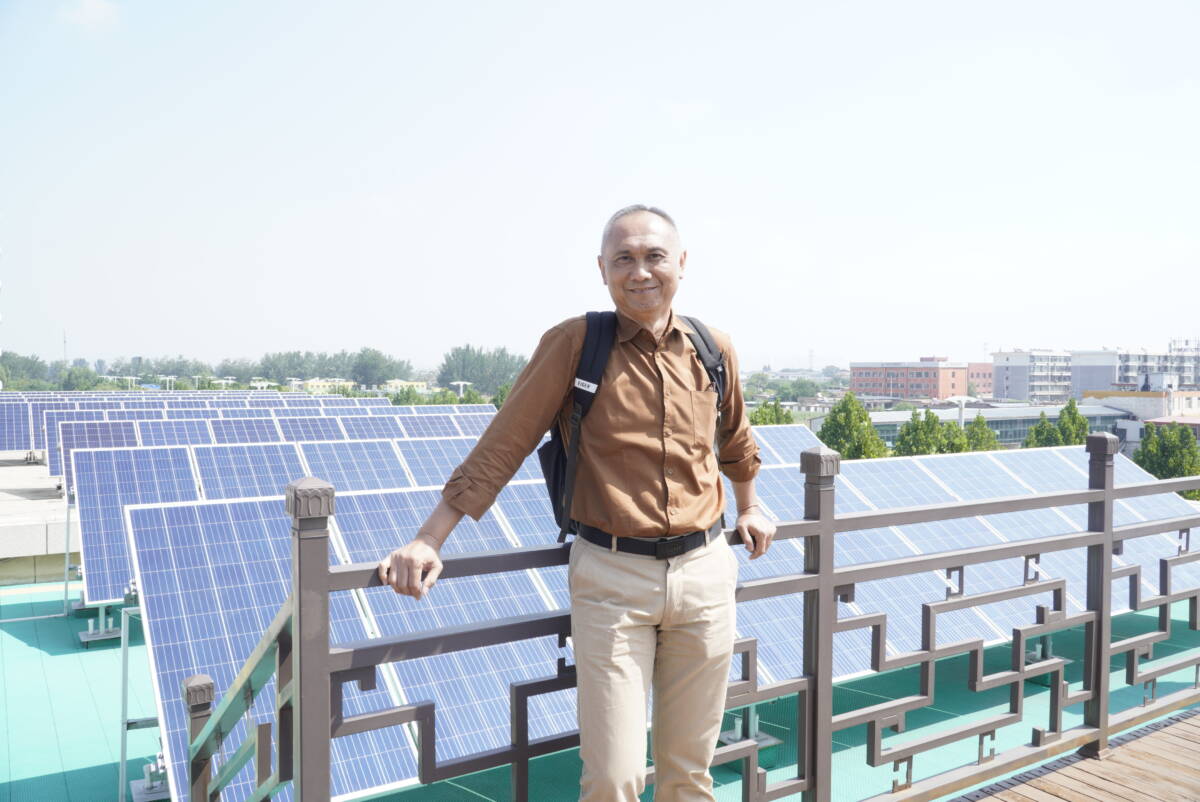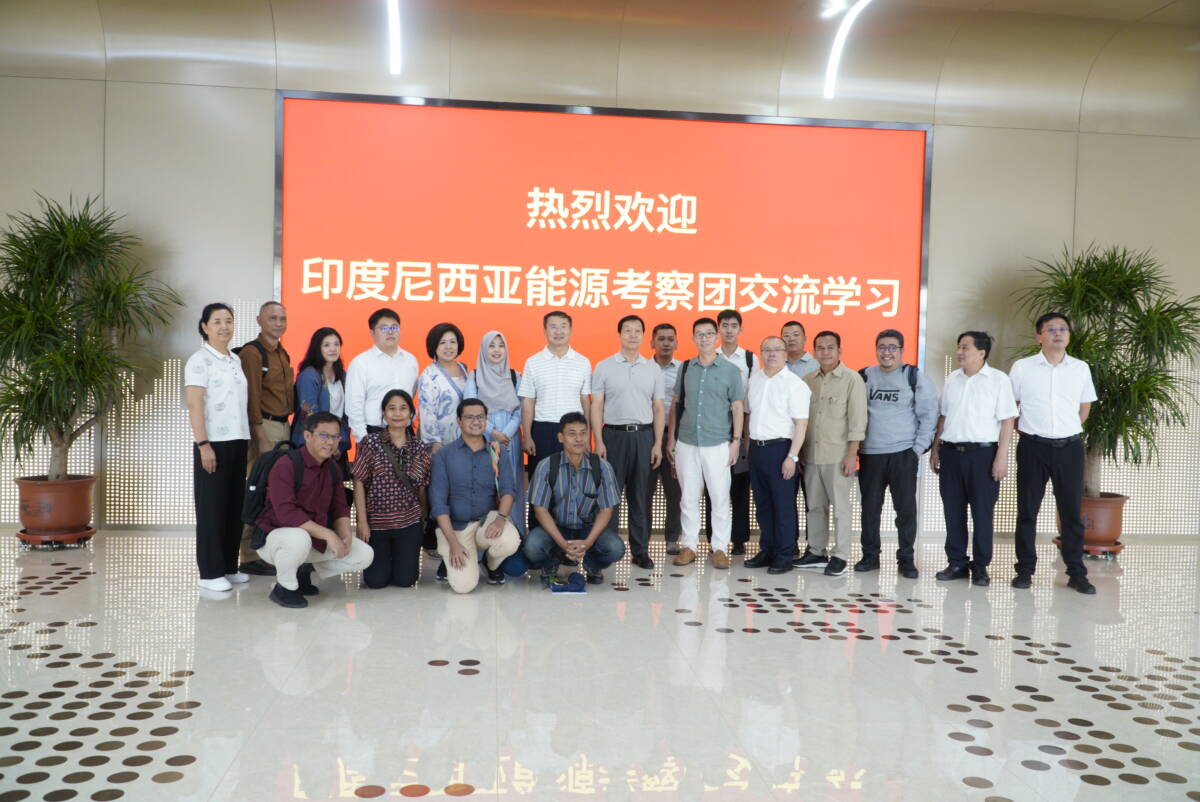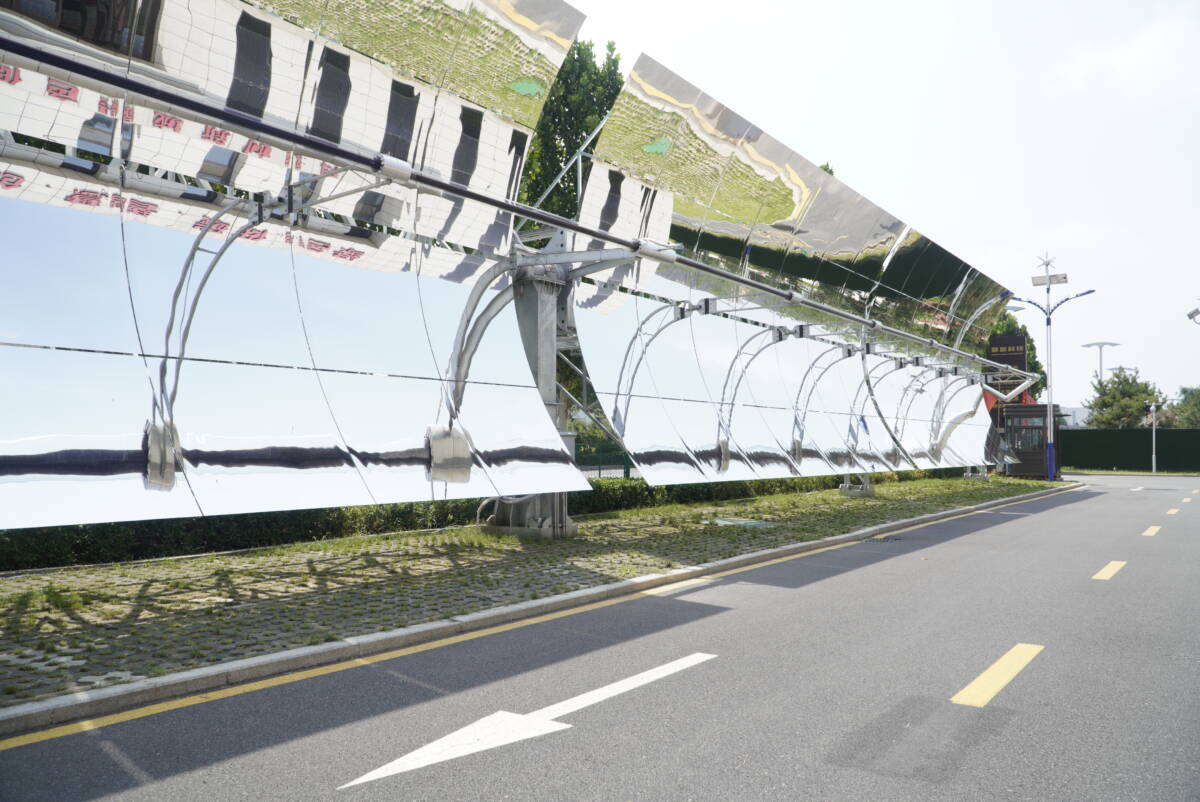
The application of solar power plants with reflectors at Shanxi Shuangliang Renewable Energy Industry Group
Taiyuan, China, 31 July 2024 – The sun shone brightly on the second day of developments in the energy transition within China’s largest coal-producing province, Shanxi. The Indonesian delegation, consisting of representatives from the provincial governments of East Kalimantan and South Sumatra, along with academics and think tank organizations, including Institute for Essential Services Reform (IESR), hurried to the Shanxi Shuangliang Renewable Energy Industry Group (31/07/2024).
The growth of the renewable energy industry in Shanxi is closely tied to the Shanxi Provincial Government’s commitment to energy transition, with efforts focused on building an integrated new and renewable energy system. According to the People of Asia for Climate Solutions (PACS) report, Shanxi’s renewable energy installed capacity target for 2025 is 83 GW, with renewable energy expected to comprise 50 percent of the energy mix by the same year. As of 2023, according to the Shanxi Daily, Shanxi has exported 9.586 billion kWh of electricity generated from new and renewable energy outside the province, marking a 14.95% year-on-year increase.
Shanxi Shuangliang Renewable Energy Industry Group focuses on mastering new and renewable energy technologies. The company claims to have developed expertise in 23 new energy technologies and has obtained 238 patents, with a primary focus on geothermal industrial technology.
Shanxi Shuangliang has transformed its facilities by incorporating various types of generators, including solar power plants with technologies such as tower type, trough type (Concentrated Solar Power Parabolic, CSP parabolic), and Fresnel or reflector type. Additionally, the company utilizes geothermal energy, wind power, and energy storage solutions. According to their estimates, the application of renewable energy in their operations is equivalent to reducing seven tons of coal annually.

Solar power plants are installed on the rooftop of the Shanxi Shuangliang Renewable Energy Industry Group building.
After visiting Shanxi Shuangliang Renewable Energy Industry Group, the delegation proceeded to China Energy Engineering Co., Ltd, Shanxi Electric Power Construction (CEEC-SEPCC). Founded in 1953 as a wholly owned subsidiary of Energy China Group, CEEC-SEPCC is a state-owned construction company, similar to state-owned enterprises in Indonesia. The company has capabilities in infrastructure investment and construction, project contracting, and operations management. Originally focused on developing fossil energy such as coal-fired power plants, the company is now expanding into renewable energy.
By February 2023, CEEC-SEPCC had constructed solar power plants with a total capacity of more than 1,000 MW, wind power plants with a capacity of over 7,800 MW, and 200 coal-fired power plants both in China and abroad.

Wahyu Gatut Prabowo, Head of Economics and Natural Resources at the East Kalimantan Regional Development Planning Agency.
Wahyu Gatut Prabowo, Head of Economics and Natural Resources at the East Kalimantan Regional Development Planning Agency, expressed his admiration for the renewable energy technology in Shanxi Province. He noted that the integration of renewable energy technology, along with a reduction in fossil fuel use, is a step currently being planned in his region.
“East Kalimantan is preparing a long-term plan through 2045, with a target of achieving up to 79 percent of the renewable energy mix. This also presents an investment opportunity as East Kalimantan is working to transform its economy,” he said.

Uliyasi Simanjuntak, Communications Manager of IESR, first row, second from the left (wearing a brown batik shirt).
Uliyasi Simanjuntak, Communications Manager of IESR, observed that the Shanxi Provincial Government’s commitment to setting clear targets for renewable energy development, supported by technological innovation and the expansion of construction businesses into the renewable energy sector, demonstrates an effective strategy for increasing public acceptance of renewable energy.
“The provincial government’s commitment to the energy transition must be communicated and implemented across the industrial and technology sectors, while also involving the community in the process. This approach will send a strong signal for renewable energy investment and create sustainable job opportunities to offset job losses in the fossil fuel sector. The provinces of East Kalimantan and South Sumatra can adopt similar strategies tailored to their regional contexts,” she concluded, wrapping up the visit on the second day of the agenda “Second Discussion on a Future Without Coal and Field Visit on the China-Indonesia Energy Transition.”
This event was organized by the Shanxi Carbon Peak Carbon Neutral Energy Revolution Research Institute (CCERR), in collaboration with the People of Asia for Climate Solutions (PACS) and the Institute for Essential Services Reform (IESR). The agenda brought together representatives from the governments of South Sumatra and East Kalimantan to study developments in Shanxi’s energy transition.

